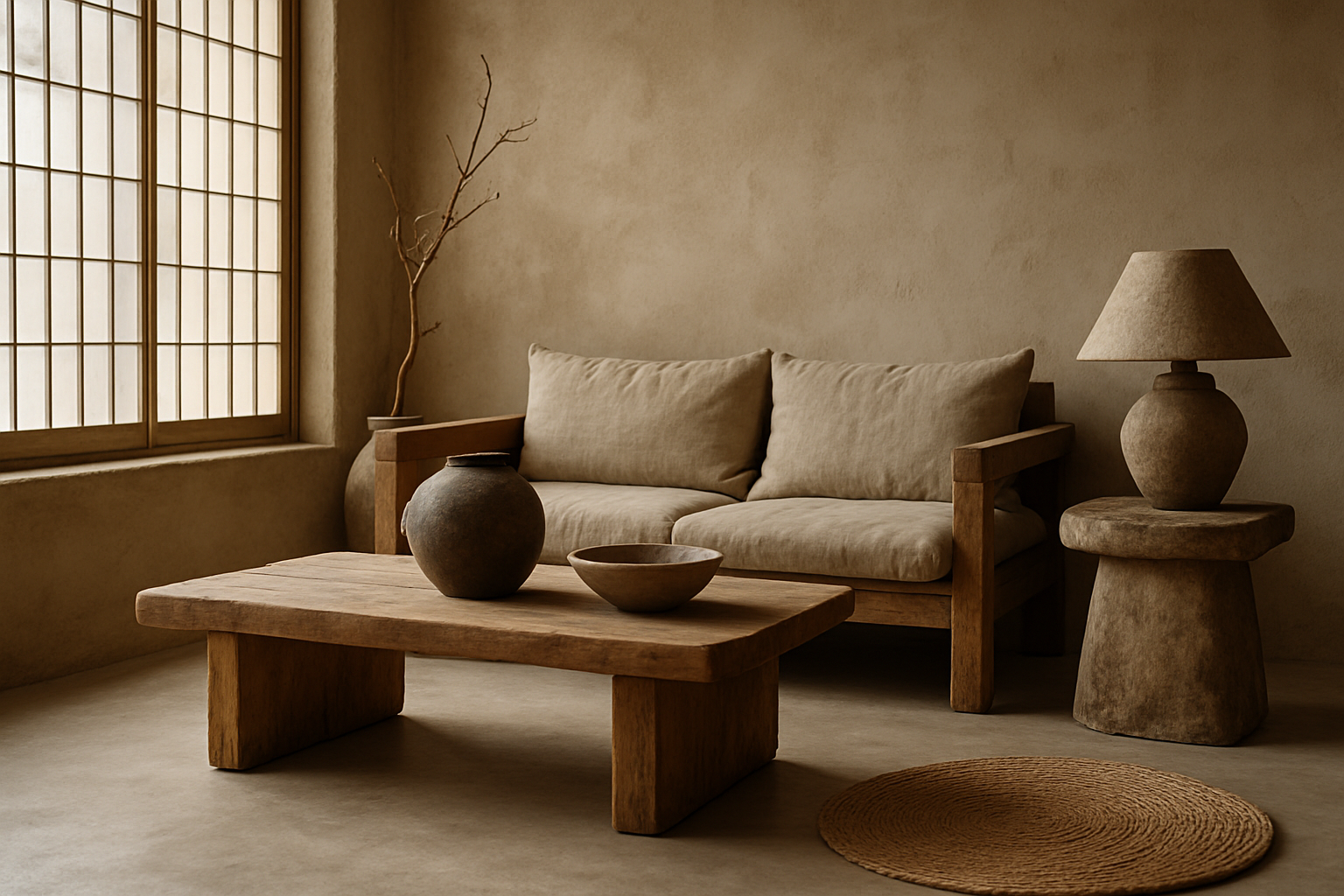Wabi-Sabi: The Art of Embracing Imperfection in Home Design
In a world obsessed with perfection, a centuries-old Japanese aesthetic philosophy is making waves in modern interior design. Wabi-sabi, the art of finding beauty in imperfection and transience, is revolutionizing how we approach our living spaces. This timeless concept encourages us to celebrate the cracks, wear, and natural aging of objects, creating homes that are not just visually striking but also deeply meaningful and connected to the passage of time.

Origins and Philosophy of Wabi-Sabi
Wabi-sabi finds its roots in 15th century Japanese tea ceremonies, where it emerged as a reaction to the prevailing aesthetic of ornate, perfect, and costly displays. The term combines two concepts: ‘wabi,’ which refers to the beauty of simplicity and humble imperfection, and ‘sabi,’ which embraces the passage of time and the beauty that comes with age.
This philosophy extends far beyond mere aesthetics. It’s a worldview that accepts and celebrates the natural cycle of growth, decay, and death. In home design, this translates to an appreciation for materials that age gracefully, such as wood, stone, and natural fabrics, and a preference for handmade or antique items that carry the marks of their makers and previous owners.
Key Elements of Wabi-Sabi Design
Incorporating wabi-sabi into your home doesn’t mean letting your space fall into disrepair. Instead, it’s about thoughtful curation and an appreciation for authenticity. Here are some key elements:
-
Natural Materials: Opt for raw, unfinished wood, stone, and clay. These materials age beautifully, developing character over time.
-
Handcrafted Items: Choose pieces made by artisans, which often have slight irregularities that add charm and uniqueness.
-
Muted Color Palette: Embrace earthy tones and subdued hues that evoke a sense of calm and connection to nature.
-
Asymmetry and Irregularity: Move away from perfect symmetry in your layouts and choose items with organic, imperfect shapes.
-
Simplicity: Keep decoration minimal, focusing on a few meaningful pieces rather than cluttered displays.
The Wabi-Sabi Home: Room by Room
Living Room: Start with a low-slung sofa in natural, undyed linen. Add cushions in various earthy tones and textures. A rough-hewn wooden coffee table becomes a focal point, its knots and grain telling a story of its past life as a tree. On the walls, hang abstract art with muted colors and organic shapes.
Kitchen: Opt for open shelving made from reclaimed wood to display a collection of handmade ceramics in various shapes and sizes. Choose a large farmhouse sink in hammered copper, which will develop a beautiful patina over time. Incorporate a vintage wooden chopping board, its surface marked by years of use.
Bedroom: A platform bed made from unfinished wood sets the tone. Dress it with rumpled linen bedding in soft, natural hues. A weathered trunk at the foot of the bed serves as storage and adds character. Hang sheer, unbleached cotton curtains that filter light softly.
Bathroom: Install a freestanding stone bathtub as a centerpiece. Use reclaimed wood for vanity countertops and shelving. Choose fixtures in brushed brass or copper that will age beautifully. Add texture with handwoven towels and a natural jute rug.
Embracing Wabi-Sabi in Daily Life
Wabi-sabi is more than just an aesthetic choice; it’s a lifestyle that encourages mindfulness and appreciation for the present moment. Here are ways to incorporate this philosophy into your daily life:
-
Practice Kintsugi: This Japanese art of repairing broken pottery with gold emphasizes the beauty of imperfection. Apply this concept to your belongings, seeing repairs as adding to their story rather than diminishing their value.
-
Curate Meaningfully: Choose objects for your home based on their significance rather than trends. Each item should have a purpose or tell a story.
-
Embrace Natural Cycles: Allow your garden to follow natural seasons, appreciating the beauty in both blooming flowers and autumn leaves.
-
Mindful Consumption: Opt for quality over quantity, choosing items that will age well and last long.
-
Create Rituals: Develop daily rituals that help you slow down and appreciate the moment, such as a morning tea ceremony using handmade cups.
The Modern Relevance of Wabi-Sabi
In our fast-paced, digital world, wabi-sabi offers a much-needed antidote to the pursuit of perfection. It encourages us to find beauty in the analog, the handmade, and the imperfect. This aesthetic aligns well with current trends towards sustainability and mindful living, as it promotes longevity and emotional connection to our possessions.
Moreover, in an era where social media often presents unrealistic standards of home perfection, wabi-sabi gives us permission to embrace our homes as they are – lived-in, slightly messy, and full of character. It’s an approach that values authenticity over staged perfection, making our living spaces more comfortable and true to our lives.
Challenges and Considerations
While wabi-sabi offers a refreshing approach to home design, it’s not without its challenges. Finding truly handcrafted items in a world of mass production can be difficult and often expensive. There’s also a fine line between wabi-sabi and neglect – it’s important to maintain a balance between embracing imperfection and maintaining a clean, well-cared-for space.
Additionally, for those accustomed to more polished interiors, the wabi-sabi aesthetic might initially feel unfinished or lacking. It requires a shift in perspective to appreciate the subtle beauty in simplicity and imperfection.
Conclusion: A Timeless Approach to Modern Living
Wabi-sabi offers more than just a design trend; it presents a holistic approach to living that values simplicity, authenticity, and the passage of time. By embracing this philosophy in our homes, we create spaces that are not only visually intriguing but also emotionally resonant and deeply comfortable.
As we navigate an increasingly complex and fast-paced world, the principles of wabi-sabi remind us to slow down, appreciate the present moment, and find beauty in the imperfect. It encourages us to create homes that are true reflections of our lives – not pristine showrooms, but warm, lived-in spaces that tell our stories through every crack, patina, and lovingly worn surface.
In embracing wabi-sabi, we don’t just change our homes; we shift our perspective on beauty, perfection, and what truly matters in our living spaces. It’s an invitation to live more mindfully, consume more consciously, and find joy in the simple, imperfect moments that make up our daily lives.





